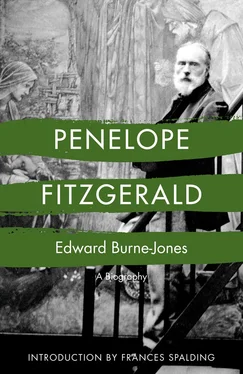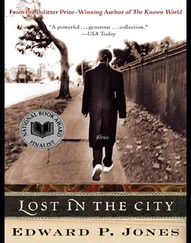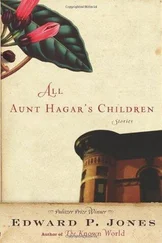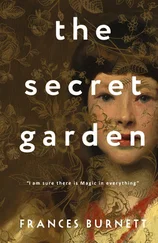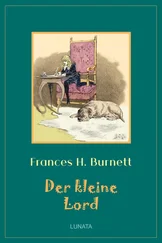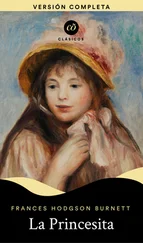Penelope Fitzgerald seems at home amid this crowded setting. Admittedly, the six years she spent researching and writing this book gave her an impressive intimacy with her subject. But also relevant here is the fact that she herself was descended from a formidable tribe. There were three bishops in her family background, and immediately after she completed this biography, she wrote The Knox Brothers about her father (the writer and editor who brought Punch into the twentieth century) and her uncles, among whom was the Anglo-Catholic priest Ronald Knox who, after agonies of indecision, ‘poped’, then wrote about his spiritual journey and became a famous apologist for Roman Catholicism. From The Knox Brothers alone, quite apart from her later novels and her biography of the poet Charlotte Mew, it is evident that Fitzgerald understood the complex tensions harboured by individuals and within families. She was well prepared for the entangled loyalties within the Pre-Raphaelite circle, its creative brilliance as well as its dysfunctional ingredients. As a biographer, her observations are wry and sane.
Burne-Jones’s mother died six days after his birth. He claimed that it left him with persistent guilt and made him ever after kind to women. The lack of a mother very probably triggered his desperate need for female affection. When he first met Georgiana Macdonald, who was to become his wife, she was only ten years old. They became engaged when Georgie was fifteen. Over the years, this small woman had to put up with a great deal, not least the emotional crisis caused by Burne-Jones’s great passion for the Greek beauty Maria Zambaco and which was made worse by her public suicide attempt when he tried to extract himself from their relationship. Fitzgerald admires Georgie’s firmness, her dignity and steadfastness. Others have remarked that she gazed at the world through pale grey eyes: Fitzgerald adds that these eyes ‘did not so much seem to reprove small mindedness as refuse to admit its existence at all’.
The Birmingham of Burne-Jones’s childhood had showed him that advancing industrialisation brought in its wake moral squalor. In response to this he looked back to medieval times, to what he felt to be a more pristine world, and fed his mind on chivalric ideals. Fitzgerald understands this well: ‘What he knew from his own experience was that beauty was an essential element without which human nature is diminished. If art gives us beauty it will make us more like human beings.’ Amid the casual flow of imagery that surrounds us today, this argument may seem bluntly utilitarian and overly simplistic. But there is no doubt that Fitzgerald here identifies one of Burne-Jones’s core beliefs. In old age his need for beauty sharpened his obsession with young women. He became completely besotted with one after another, including May Gaskell, to whom he wrote often five or six times a day, Fitzgerald reminding us that in this period there were in all seven posts in the course of a single day. It did not seem to matter to him that she was married. ‘Mrs Gaskell, if not firm, must have been a tactful woman,’ Fitzgerald remarks. ‘She managed a difficult situation extremely well.’
This dry authorial voice is one of the pleasures of this book. Another is the use of idiosyncratic detail. Whistler, who favoured full-length portraits, is glimpsed weeping over his inability to capture on canvas the tightly trousered legs of his patron Frederick Leyland. After an outing which Burne-Jones made with three others, there is a trip back into London by means of a hired fly because one of the party, Ellen Terry, has suddenly taken against the train and refuses ‘to get into the nasty thing’. And when Burne-Jones becomes a regular guest at country house parties, Fitzgerald reminds us how icily cold such houses could be, ‘so that the ascent to the bedroom, candle in hand, was like an Arctic expedition’. We learn that once back in London, the artist took to meeting his young women in the heated Palm House at Kew Gardens. No wonder Georgie at one point goes in search of a country retreat where her husband can be removed from the fray of life. She travels to Brighton, turns her back on it, and walks over the Downs to Rottingdean. Here she finds an empty house on the village green which is promptly bought. One of its attractions was that the view from the back looked on to the Downs. From the front, the biographer notes, ‘you could see the solid little grey church, which had survived gales and fires and even the restorations of Gilbert Scott’.
Fitzgerald’s narrative repeatedly excites with the interest that surrounds Burne-Jones’s artistic development. She takes us inside the studio, identifies recurrent themes, tracks commissions and recognises the importance of exhibitions, particularly those held at the Grosvenor Gallery where the rich brocades and theatrical décor set off his art to perfection. ‘From that day’, his wife writes, with reference to its opening exhibition in 1877, ‘he belonged to the world in such a sense that he never had done before, for his existence became widely known and his name famous.’ Less happy was his relationship with the Royal Academy of Arts, from which he eventually resigned; and at the famous Whistler vs Ruskin trial he loyally, if reluctantly, gave evidence on Ruskin’s behalf, which Whistler never forgave or forgot. Fitzgerald is an able guide to many things, but brings expert knowledge of flowers to Burne-Jones’s use of them in his paintings. She evidently travelled far in search of his pictures, his decorative schemes and stained glass, and, although her critical analysis remains pleasingly light, she can be very discerning. His art, she concludes, is ‘based on ideas and treatments that had lingered for years in his mind, a mind that was obliged to repeat certain obsessional patterns corresponding to the inner life’.
Alongside the procession of paintings that runs through this book are the many friendships which Burne-Jones enjoyed with writers and artists: with Swinburne and George Eliot; with ‘Tad’ – Sir Lawrence Alma-Tadema, the jocular painter of domestic scenes in ancient Greek and Roman times – with the painter of moral allegories G. F. Watts, with Ford Madox Brown, Val Prinsep and others. To some extent Fitzgerald’s rich knowledge of Victorian art may have been stimulated by her friendship with the White Russian émigré and former Tate curator, Mary Chamot, who knew a great deal about Burne-Jones and kick-started the research for this book by lending its author the notebook Burne-Jones filled during a trip to Italy in 1871, a fact mentioned in Hermione Lee’s indispensable biography of Penelope Fitzgerald.
The overall tone of Fitzgerald’s biography of Burne-Jones is affectionate and admiring. But it does not ignore the tragic notes, which increase as time goes on. Burne-Jones is particularly saddened by the mental confusion that engulfed Ruskin and by Morris’s decline. He is deeply moved by the sight of Morris’s coffin on a haywain decorated with moss and entwined with striplings of willow. It was the exact opposite, Fitzgerald notes, of Lord Leighton’s funeral, for the former President of the Royal Academy had lain in state in Burlington House before a public procession took him to his funeral at St Paul’s Cathedral. But it was Morris, not Leighton, that Burne-Jones had in mind when he wrote to May Gaskell,‘… the King was being buried, and there was none other left’. Throughout this book, the reader’s sympathy with Burne-Jones steadily deepens. Fitzgerald describes him at the beginning of 1898, aged sixty-five, his clothes now frequently crumpled, unlike the ‘ridged’ trousers worn by his fashionable son Phil, after much careful ironing. Burne-Jones was, we are told, ‘more puzzled than ever by a world which was too arrogant to recognise that its restlessness was the result of a neglect of beauty’. Under the influence of this book’s persuasive portrait, it is hard not to agree.
Читать дальше
